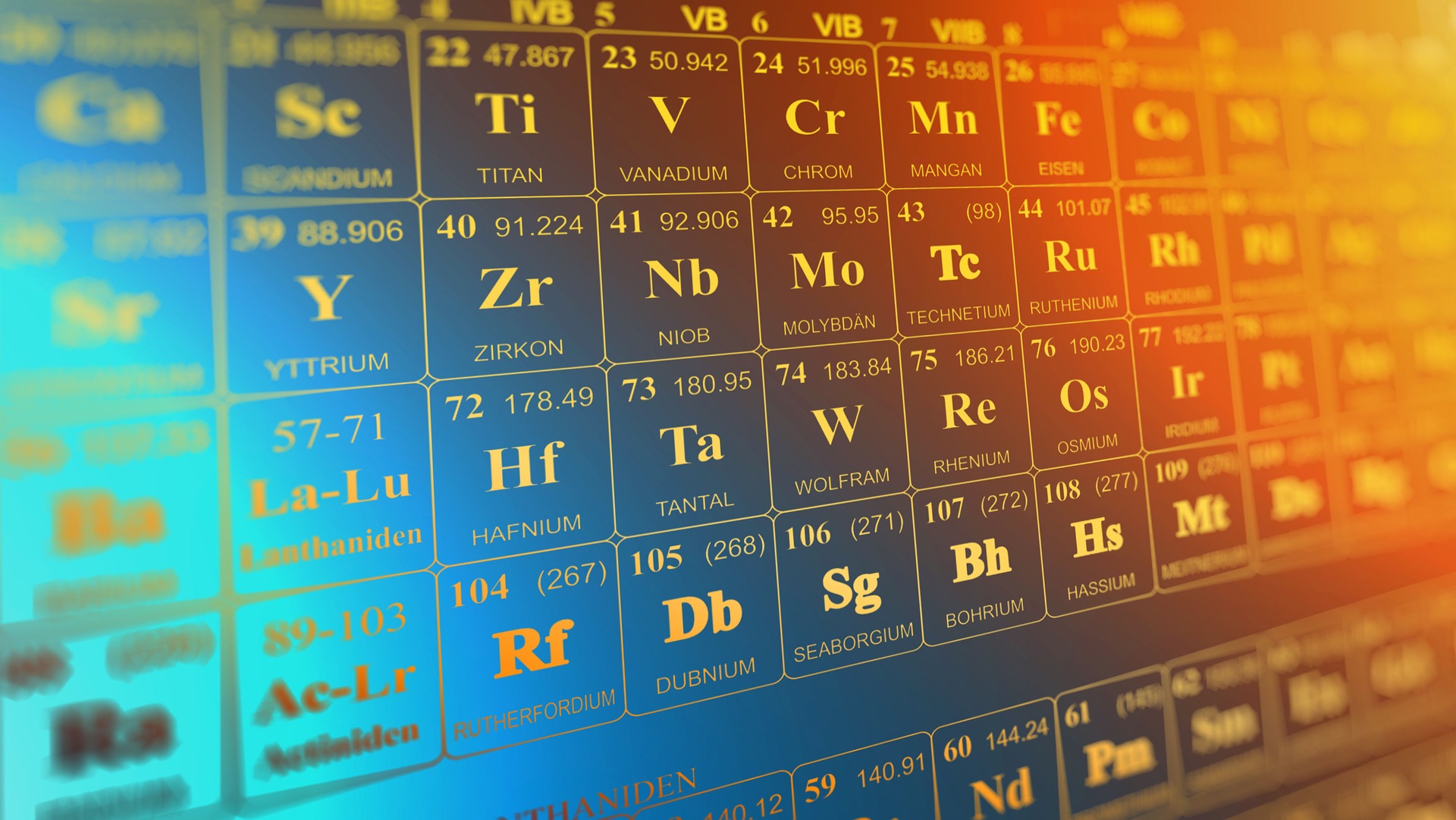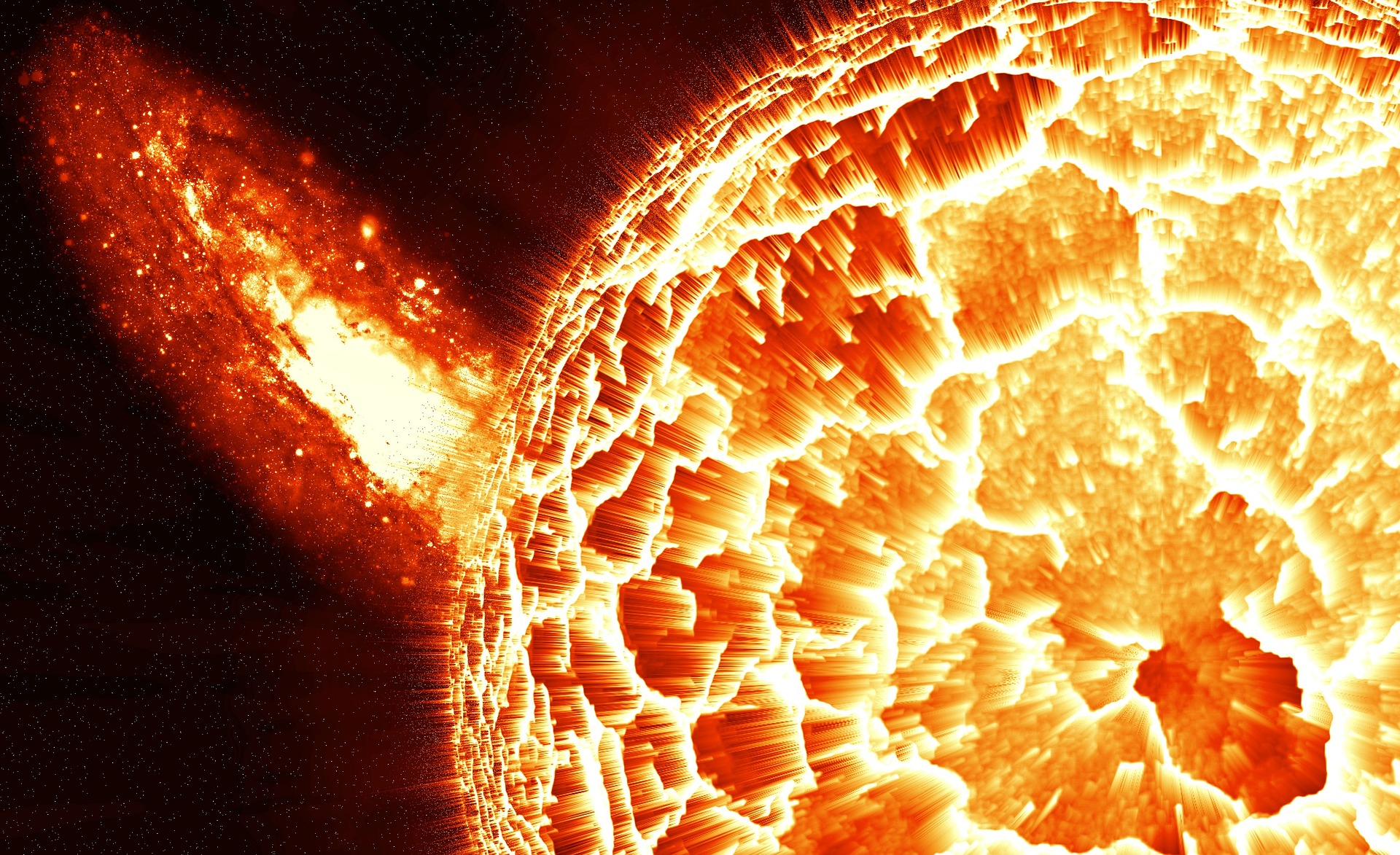Stardust and Eternity – 3.1.3
Nucleosynthesis of Chemical Elements
A long-standing problem for both physicists and astrophysicists is the origin of heavy elements, or “metals”, in our Universe. Indeed, these chemical elements could not have been produced directly on Earth due to the extreme temperature – tens of millions of degrees – and pressure conditions required for their formation. This implies that metals must have existed since the formation of our planet – and thus of our Sun – about 4.6 billion years ago. However, the Solar System originated on the periphery of the Milky Way from the collapse of a giant molecular cloud; this means that these elements must have already been present in the galaxy’s sparse interstellar medium from the very beginning. We now know that of the 118 known chemical elements, only the lightest ones (namely hydrogen, helium, and traces of lithium and beryllium) were created soon after the “Big Bang” explosion, which gave rise to our expanding Universe around 13.7 billion years ago. All other “heavier” chemical elements were created in the inner cores of stars through thermonuclear reactions or directly in space during their violent death as supernovae.
The physical process that underlies the creation of heavy elements inside stars (and which counteracts their eventual collapse against their own gravity) is called “stellar nucleosynthesis”. This process – first theorized by British astronomer Arthur Eddington in 1920 – is able to create all chemical elements except hydrogen, which requires very extreme physical conditions of temperature and pressure (only ocurring during the Big Bang). Eddington suggested that hydrogen in the core of stars would fuse to form helium, raising the possibility that also heavier elements could be produced in stars. Today we know that all “Main Sequence” stars, which constitute the 90% of stars in the entire Universe – including the Sun – produce their energy by “burning hydrogen”, i.e. by converting four hydrogen nuclei into one helium nucleus at a rate of million of tons per second. The fusion of atoms through the combination of their positively charged nuclei requires enormous temperatures and pressures that can only be found inside stars. Energy is produced because, after hydrogen fusion, the total mass of the resulting helium nucleus is less than the sum of the four hydrogen nuclei; this implies that part of the original hydrogen mass (about 0.7%) has been converted into energy, according Einstein’s well-known formula for the equivalence of mass “m” and energy, E = mc2, where “c” is the speed of light (300,000 km/s). The energetic gamma radiation generated through this process slowly makes its way towards the outer layers of the star, loosing its energy through interaction with the stellar material; after hundreds of thousands of years, it finally reaches its surface as less energetic ordinary light – the sunlight we see from our star.
Alongside helium, heavier elements such as carbon, nitrogen, oxygen and iron – which require even higher temperatures and pressures to be formed from lighter elements – are created in a similar way during successive stages of nuclear burning from nuclear fusion in cores and layers, but in stars that are several times more massive than our Sun. The heaviest element that can be created in this way is iron. Fusion up to iron produces the nuclear energy required to counter gravitational pull, but fusion beyond iron has a different effect: it does not create energy, rather it absorbs energy – leading to a sudden catastrophic implosion of the stellar core, which is unable to fight the gravity of the material pushing from the outer layers, and to its death. Following this destructive process, a supernova explosion tears the star apart and, under these extreme conditions, elements with an atomic number greater than iron can be created. When stars die and disperse their material, they feed and seed the intergalactic environment with a variety of heavy chemical elements, allowing for the creation of new stars and planets and, thanks to carbon and oxygen, life itself.

Further Resources
Links below will redirect you to external websites. In accordance with the European data protection declarations, we would like to point out that by clicking on these links you may send data to external providers. We cannot prevent that.
Images
![]() Abundance of the elements in the Sun (AMNH)
Abundance of the elements in the Sun (AMNH)
![]() proton–proton chain (ESO, Borb)
proton–proton chain (ESO, Borb)
Videos
![]() The origin of the chemical elements
The origin of the chemical elements
![]() Nucleosynthesis of the elements
Nucleosynthesis of the elements
![]() How Different Atoms are Formed — Nucleosynthesis Explained!
How Different Atoms are Formed — Nucleosynthesis Explained!
 Nucleosintesi stellare e zona abitabile della galassia – Antonio Loiacono
Nucleosintesi stellare e zona abitabile della galassia – Antonio Loiacono
 Esplosioni stellari: come da una supernova nasce una stella di neutroni – OPC – Osservatorio Polifunzionale del Chianti
Esplosioni stellari: come da una supernova nasce una stella di neutroni – OPC – Osservatorio Polifunzionale del Chianti
Online Resources
 La tavola periodica e la nucleosintesi – EduINAF
La tavola periodica e la nucleosintesi – EduINAF
 Produzione di elementi leggeri – Scienza per tutti
Produzione di elementi leggeri – Scienza per tutti
 Principio di produzione di elementi più pesanti del ferro – Scienza per tutti
Principio di produzione di elementi più pesanti del ferro – Scienza per tutti
 Nucleosintesi stellare: come le stelle creano tutti gli elementi – Greenlane
Nucleosintesi stellare: come le stelle creano tutti gli elementi – Greenlane
 Sta per splendere una “nova” stella nei nostri cieli, grazie a una rara esplosione stellare – Focus
Sta per splendere una “nova” stella nei nostri cieli, grazie a una rara esplosione stellare – Focus
Further readings
![]() Stellar Evolution and Nucleosynthesis (S.G.Ryan, A.J.Norton)
Stellar Evolution and Nucleosynthesis (S.G.Ryan, A.J.Norton)
![]() Supernovae and Nucleosynthesis (D,Arnett, W.D.Arnett)
Supernovae and Nucleosynthesis (D,Arnett, W.D.Arnett)
![]() Principles of stellar evolution and nucleosynthesis (Donald D. Clayton)
Principles of stellar evolution and nucleosynthesis (Donald D. Clayton)
Teaching Material
![]() Montessori Stellar Nucleosynthesis (Cosmic Montessori School)
Montessori Stellar Nucleosynthesis (Cosmic Montessori School)
 Nucleosintesi (Didattica delle Scienze)
Nucleosintesi (Didattica delle Scienze)
For Kids
![]() Nucleosynthesis for kids – with playdough (video)
Nucleosynthesis for kids – with playdough (video)
 La Fisica delle particelle e l’Universo spiegata con i Lego. Parte 4: Nucleosintesi stellare – Cristina Milano
La Fisica delle particelle e l’Universo spiegata con i Lego. Parte 4: Nucleosintesi stellare – Cristina Milano

